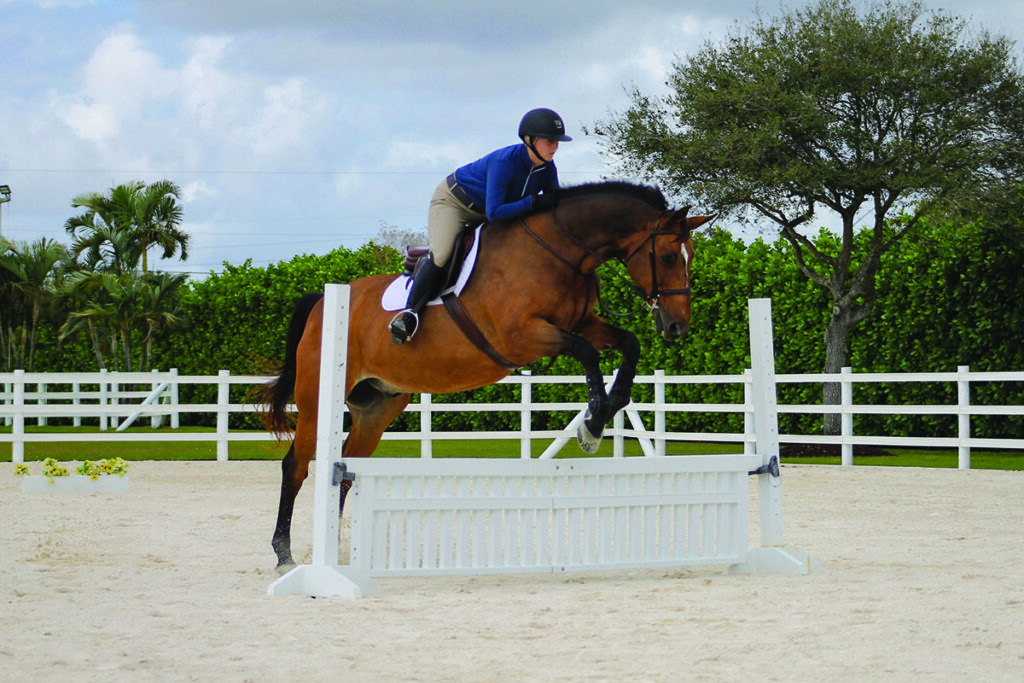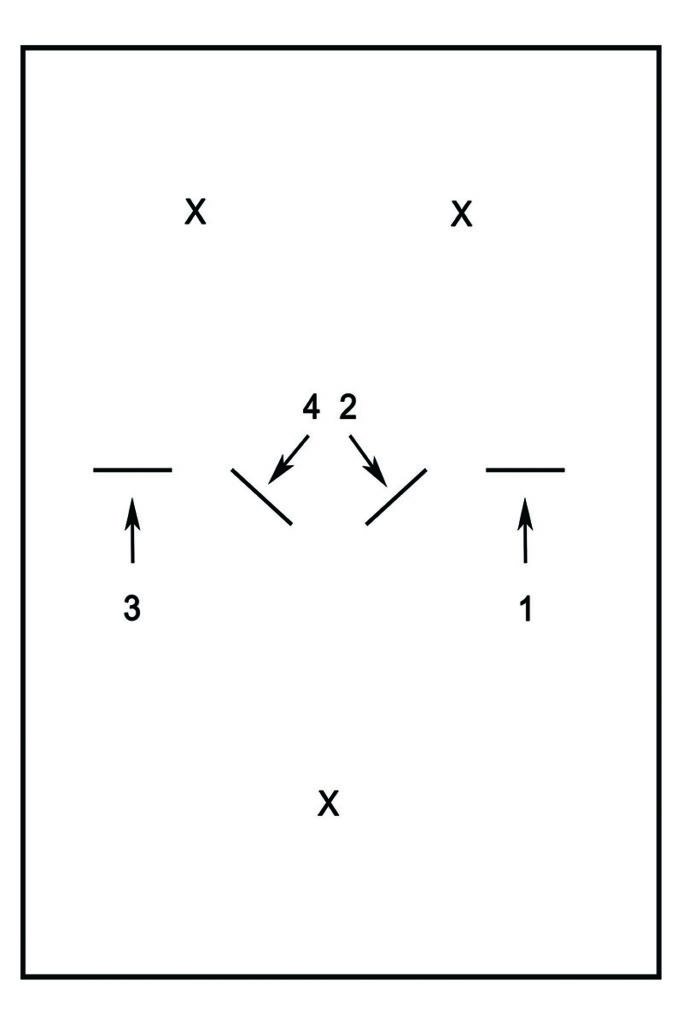Jumping Practice Courses


There is often a misconception among jumping riders that in order for a practice course to be interesting or beneficial, it needs to be a lengthy, complicated track. While it’s important to test yourself and your horse in this way, it’s also important to take time to return to basics and use practice tracks for jumping. By using a course that is easy to remember, it frees your mind up to focus on the details. This course is also a great idea for anyone that is making do with a limited number of jumps or a smaller riding area.
The jumps are to be set up as pictured in Figure 1. The jumps can be any height that you and your horse are comfortable with, even if that is just ground poles. Feel free to switch up the order and direction in which you ride the jumps, but for the sake of our discussion, I will be using the course described in Figure 1.


Ride a Practice Course Three Ways
There are three different styles in which to ride this jumping practice track: hunter, equitation, or jumper. When practicing more of a hunter-style course, your goal should be to establish a tempo and then stay on that tempo with only tiny adjustments.
Your inside leg should be used to create an inside bend and to push your horse out into every turn, going all the way to the rail. Use your corners to re-evaluate your rhythm and make sure you are not slowing down nor speeding up. It is easy to gain momentum after the first one or two jumps!
Next is the equitation style practice track. If possible, give yourself markers of some kind. Place the markers as shown in Figure 1. Now the goal is to execute the same track in a tighter space, turning just outside the markers for all of the turns during the course, including before the first jump and after the final jump. Now your organization skills are starting to be put to the test as the questions arise faster due to a shorter time between jumps.
The last track to try out is the jumper practice track. This time you will be turning before your markers from the equitation track, or you have the option to move them in closer to the jumps to challenge yourself. Your focus should now be on the responsiveness of your horse as you move through a tighter track with a faster rhythm. Remember not to cut your corners so tightly that you sacrifice straightness. Your horse should be straight for the last two to three strides before the jump in order to give him time to properly prepare for takeoff.
Other Points to Address
This exercise can also be used to address problems specific to certain horses and riders. If your horse tends to rush toward the jump or immediately after, the practice track allows for halting after each jump.
Horses that can be wary of new or different jumps can be acclimated by placing different fillers underneath the jumps. Because the track is simple, it is easier for the horse to negotiate the potentially scary obstacle in front of them rather than also dealing with a prescribed distance in a line or a tight turn before or after the jump in question.
Because of the simplicity of the track, this is also a great time to experiment with how small changes in your body affect your horse. Examples include shifting your weight slightly in the air to help your horse land on the correct lead, adjusting the timing of your half-halt in the turn, and experimenting with the strength of your leg and rein aids while turning.
If you or your horse already prefer a certain style of riding over the others, I encourage you to branch out. Not only will it contribute to your growth as a rider, but your horse will also benefit from doing something different.
When riding your jumper on the hunter track, they will start to soften in the corners and refrain from rushing as they realize they aren’t being asked to turn quickly and find the next jump. This softness will greatly improve your ability to adjust your horse’s stride length.
While riding your hunter on the equitation or jumper practice track, your horse will start to become more responsive to the aids as the turns come up quicker, which comes in handy when you need to make small, invisible adjustments on course.
After riding all three jumping practice courses, it is very likely that you come across something that you or your horse find difficult. This creates a great opportunity to select future exercises that specifically target these problem areas.
This article about jumping practice courses appeared in the June 2021 issue of Horse Illustrated magazine. Click here to subscribe!
Recent Posts
2025 FEI Basel World Cup Finals Hands Reins to Fort Worth 2026
As U.S. athletes look back on valuable experience gained at the 2025 FEI World Cup Finals in Switzerland, the next…
How to Clean a Horse’s Sheath
If you’ve never cleaned a horse’s sheath, you probably have questions. First and foremost, is it really necessary? And more…
All Three Equestrian Sports Receive Final Confirmation for the LA 2028 Olympic Games
After a nail-biting two years of speculation about the inclusion of equestrian sports in the next Olympic Games, it was…
ASPCA Right Horse Adoptable Horse of the Week: Xanthus
Welcome to Horse Illustrated’s weekly installment of the Right Horse Adoptable Horse of the Week, offered in partnership with the…
Be Your Horse’s Joint Health Champion
Equine arthritis can affect horses of all disciplines and ages, and early intervention is crucial for maintaining comfort and performance.…
Tamie Smith: Taking It To The Next Level
Mother, grandmother, and winning 5* eventing rider—these three titles don’t typically go together. However, Tamie Smith, 49, is all of…